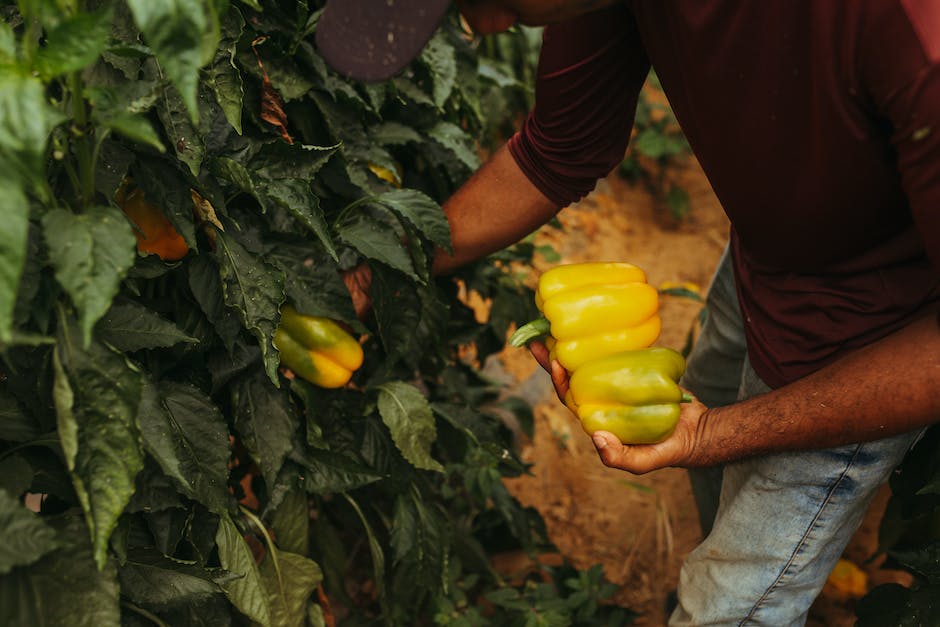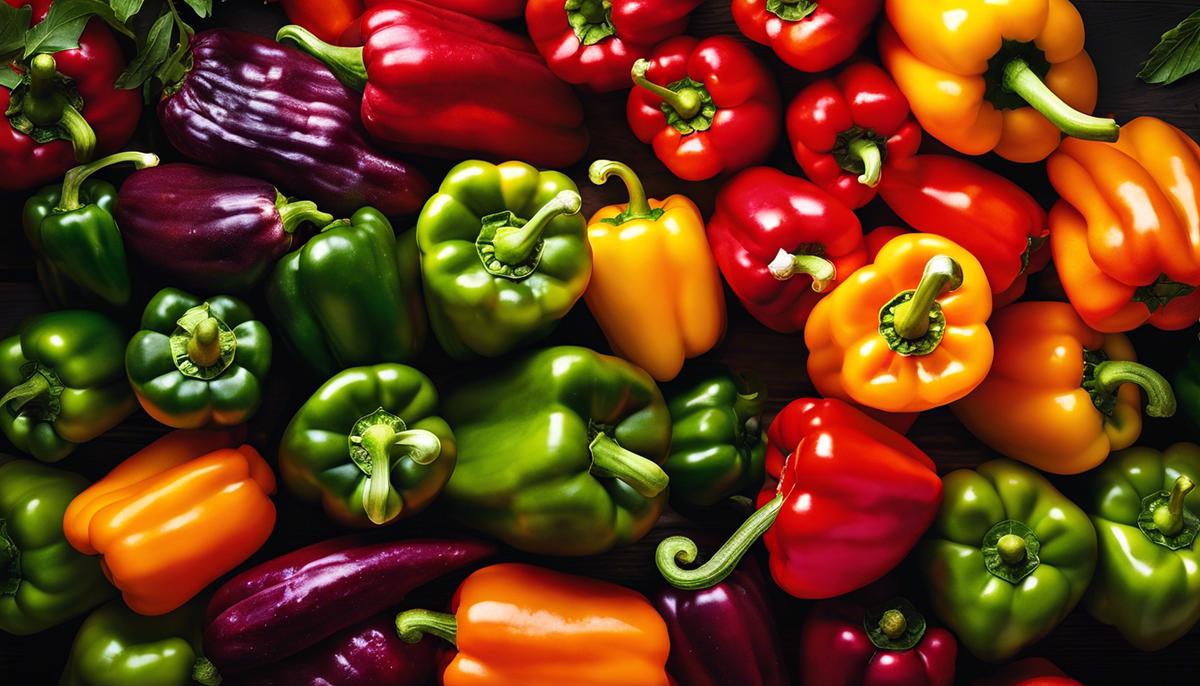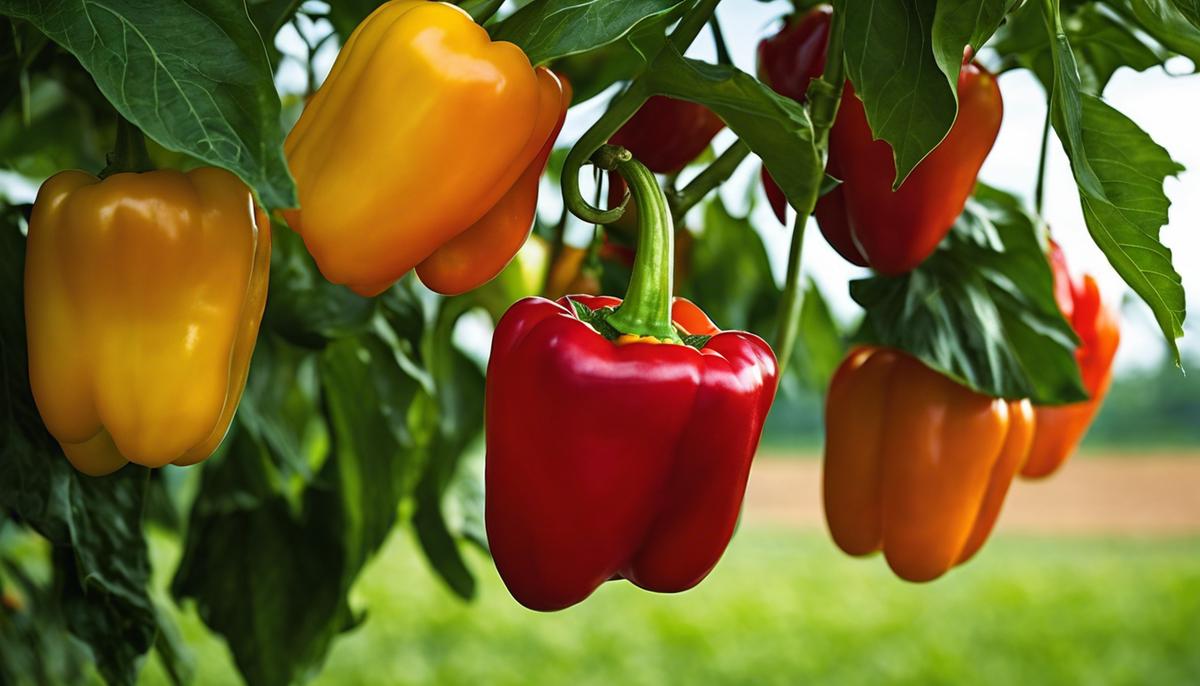Gardening enthusiasts and home cooks alike understand the value of fresh, home-grown bell peppers in enhancing the flavor and health quotient of their meals. Packed full of nutrients and bursting with intense, diverse flavors, bell peppers are a popular addition to many recipes. However, the key to unlocking their maximum potential lies in their quality, freshness, and the care taken during their harvesting. This guide will delve into identifying the right time for harvesting bell peppers, the proper techniques employed in their collection to prevent any damage to the plant or the fruits, and lastly, learn about the post-harvesting care and usage, including storage, usage, and preservation methods to maintain the peppers’ freshness and retain their flavor after the harvest.
Identifying the Right Time for Harvesting
Timing is Everything: Knowing When to Harvest Bell Peppers
The mastery of bell pepper cultivation lies not only in carefully nurturing these vivacious plants but also in knowing the best timing for their harvest. But don’t fret, this article will be your guide to ensure your peppers provide their utmost flavor, texture, and richness every time.
Reader Poll: What online courses would interest you?
Bell peppers, also renowned as sweet peppers, are an essential component in homegrown gardens. These vibrant veggies come in an array of colors that flourish over time: first green, then, depending on the variety, turning yellow, orange, red, or even purple. The critical signal indicating when to harvest your bell peppers lies, therefore, in their transition of colors.
In the first stage of development, peppers will be firm and vibrant green. Simple rule of thumb: greener peppers hold more of a sharper, somewhat bitter taste, whereas fully matured bell peppers yield a more sweet, robust flavor profile. This key information guides us to our conclusion: harvest time is predominantly controlled by your personal taste preference.
If you’re a fan of the bold, somewhat bitter flavor green bell peppers offer, harvesting can be done in the early stage of growth when they reach a decent size, usually around 3 ½ to 4 inches in diameter. Try to avoid picking too early though, as this might lead to smaller and less flavoursome peppers.
Subscribe to our newsletter!
Now, if you’re someone who revels in sweeter notes of bell peppers, prepare to play the waiting game. Allow those peppers to continue their growth journey, and watch as they transition from green to their ultimate maturity color, whether that’s red, orange, or yellow. As the peppers go through this change, they develop their defining sweetness.
Furthermore, the skin of a ripe bell pepper will be easy to the touch yet still firm. Gently squeeze your prospective picks. If a pepper yields easily under pressure and has a slightly wrinkled appearance, it may be past its prime.
The method of harvesting the peppers is equally critical as the timing. Firstly, ensure your hands are clean and dry. Use a sharp set of gardening shears or a knife; pulling can damage the plant. Cut each pepper off the plant, leaving a tiny bit of the stem on the vegetable.
Understanding these nuanced, vibrant vegetables and the harvesting timeline they follow can lead to two vibrant harvests each growing season, if conditions allow.
Remember, patience is key in the gardening world, especially with bell peppers. So let time do most of the work, and reap the fruits – or in this case, vegetables – of your labor at their prime. Here’s to flavorful meals featuring your wonderfully ripened and deliciously fresh homegrown bell peppers. Happy harvesting!

Proper Harvesting Techniques
Mastering the Art of Bell Pepper Harvesting: Techniques for Safe Picking
As we delve deeper into the captivating world of bell pepper cultivation, it’s time to understand the nuances of harvesting. While our previous discussions have revolved around the importance of color transformation and the flavor profile of bell peppers, it’s crucial to overlay that with recommended harvesting techniques.
Begin your harvesting endeavor by prepping your tools. Bell peppers are not clingy with their host plants, but a simple yank from their stalk could potentially harm the plant. Your most trusted ally for this task would be a pair of sharp shears or a knife. Clean and sanitize these, as peppers are prone to diseases, and this small step can significantly reduce any disease’s spread.
Now, with bell peppers, timing is everything. But how to tell when exactly is the right time to pick these colorful jewels? Generally, a fully matured bell pepper measures about 3.5 to 4 inches in diameter. This is a considerable indication that your bell peppers have attained the right size and are ready for harvest. Always remember though, look out for the firm and glossy skin – that’s the secret sign from the peppers saying they’re ripe and ready!
Moving on to the process of harvesting, identify the ripe peppers. Gently hold the bell pepper in your hand to stabilize it. Then, use your sharp tool to cut the stem about an inch above the fruit. A simple straight cut should be made rather than a jagged cut, which could potentially harm the plant.
For those who are in regions with a long growing season, your bell pepper plants may bless you twice with their bounty in the same year. Harvesting early for the green peppers has its own advantages, while waiting for the transition to red, orange, or yellow peppers would be a treat for those who crave a sweeter flavor. Hence, stagger your harvest: pick some while they’re green and leave others to ripen further. This technique not only provides different flavor profiles but also helps to extend the harvesting season.
Pro tip! Don’t toss away the gloves while harvesting your bell peppers. While they are not as spicy as their cousins – the jalapenos or habaneros – bell peppers do contain capsaicin (though in significantly lower amounts), the compound that imparts the ‘heat’ in peppers. So, better safe than sorry!
Lastly but most importantly, the hobby of bell pepper cultivation needs patience, bearing in mind that nature has its own pace. If, at times, the color transition is slower, don’t worry. Just sit back and continue to offer your tender care. After all, the taste of patience is indeed sweet, or in this case, crisp and delicious!

Post-Harvesting Care and Usage
Moving on from the growing and harvesting aspects of bell pepper cultivation, we’ve now come to what might be the most rewarding aspect of this hobby – taking care of the fruits of your labor and making use of these vibrant veggies.
So, now that you’ve successfully harvested your bell peppers, what’s next?
1. Clean, Clean, Clean:
While the temptation to bite right into your fresh harvest can be high, always remember to do a little post-harvest cleaning first. Some gentle rub under running water will do justice without deteriorating the texture or flavor.
2. Storage Matters:
Consider storing your bell peppers in a refrigerator if you’re not intending to use them immediately. It will help extend the shelf life for up to 2 weeks. Keep in mind that bell peppers do not like too much cold, so aim for temperatures around 45 to 50°F (7 to 10°C) for best results.
3. Freezing is an option, too:
If you still have bell peppers left even after making your favorite stuffed peppers, jambalaya, or ratatouille, consider freezing them. For this, you’d want to wash your peppers, seed them, and cut them into slices or dices. Then blanch them to retain their color, flavor, and nutritional value. You can then store the cooled peppers into freezer bags, expel extra air, and seal them for up to a year’s storage.
4. Pickling is Pleasurable:
If refrigerator space isn’t plentiful or if you’re not very fond of blanching and freezing, try pickling your peppers. Put them into jars with a vinegar-based brine. This method can extend their lifespan significantly and give them a delicious tang, good enough even to turn pepper skeptics into enthusiasts.
5. Handling With Care:
If your bell peppers are harvested at their brown or white stage, they are super sensitive. It is crucial to handle them gently to prevent bruises or breakdowns that could bring about premature rotting.
6. Using Them Up:
Peppers are versatile in the kitchen – they add flavor, color, and texture to so many dishes, from salads to stir-fries and roasts to relishes. Experiment with different recipes, and you’ll surely run out of your peppers before you run out of creative dishes to include them in.
Remember, opportunities for using your bell pepper harvest are only limited by your imagination. Possibilities are vast, from culinary experiments to sharing with friends and neighbors. Grasp them, and savor the joy that homegrown harvests provide. After all, this hobby is not just about the peppers; it’s about the pleasure of nurturing, the thrill of harvest, and the joy of sharing.

Bell pepper cultivation is indeed both an art and science which, when mastered, can reap surprisingly rewarding results. Optimizing the timing of the harvest, using precise techniques to pick the ripe peppers, and implementing post-harvest care methods, all play an essential role in ensuring the quality, taste, and nutritional content of the bell peppers. Whether you plan to use them in your next culinary masterpiece, as a crisp, crunchy snack, or to store them for later use, these practical tips will empower you to get the most from your bell peppers and revolutionize your home-growing experience. Remember that patience, care, and a keen eye for detail are the most important tools in your garden shed.

